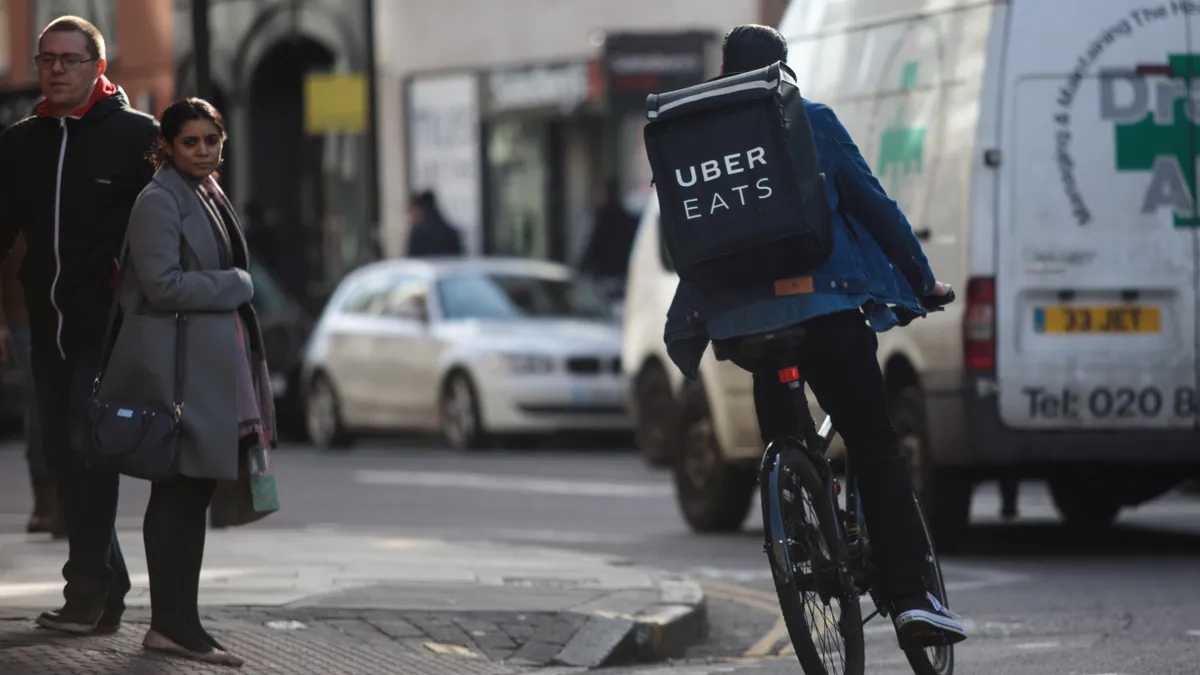Dive Brief:
- Uber Eats and Postmates today announced a new tiered pricing structure, with 15%, 25% and 30% fee plans.
- Uber Eats began testing new fee offerings in late 2020 based on feedback from partner restaurants, and the platform's new pricing was created with input from thousands of U.S. operators, Sarfraz Maredia, vice president of U.S. and Canada for Uber Delivery, said in a statement emailed to Restaurant Dive.
- Uber's restaurant delivery arm is the last of the major third-party delivery aggregators to implement tiered pricing options for restaurants. DoorDash launched its three-tiered commission fee structure in April, while Grubhub also offers tiered commission plans.
Dive Insight:
Uber Eats's new pricing model is a deviation from the single "marketplace fee" it used to charge partner restaurants. That fee included costs of onboarding new delivery couriers; paying couriers; equipping couriers with insurance and personal protective equipment; marketing; technology services and customer service for partner restaurants.
The delivery giant has also adjusted its merchant contracts, removing a requirement of pricing parity between in-restaurant dining and delivery. In other words, restaurants can now list different menu prices on the Uber Eats app than they do at the restaurant.
"It's become clear this is an important pricing lever for our partners—and since making this change we’ve seen merchants taking advantage of the flexibility," Uber Eats said in an email.
Uber Eats' 15% "Lite" fee plan is designed for restaurants that are interested in low-cost delivery fulfillment. This tier includes higher delivery fees for diners, and doesn't include Uber Pass benefits for diners. Restaurants that choose this plan must also pay out of pocket to run ads and promotions, and will only appear in the Uber Eats app when consumers search for their brand directly.
The 25% "Plus" and 30% "Premium" plans include reduced delivery fees for consumers, increased visibility on the Uber Eats app, Uber pass benefits. While Plus members still have to pay for ads and promotions, Uber Eats will match Premium members' ad spend up to $100 each month. The 30% fee plan places restaurants higher in the Uber Eats app home screen.
Such pricing structures seem to be delivery companies' solution to the backlash they’ve faced over collecting high commission fees, which typically average at 30%. Criticism of this practice has become even more intense throughout the pandemic, when delivery became critical lifeline for many restaurants.
Delivery companies could also intend for these tiered commission fee options to stop the stream of delivery fee caps local governments are implementing across the country. Both New York and San Francisco, for example, have permanent 15% fees in place, while many other cities have enacted temporary fee caps during the pandemic. Uber Eats is a plaintiff in a lawsuit challenging New York City's permanent 15% delivery fee cap.
Allowing operators to scale up or down could help smaller restaurants that rely on third-party apps as a solid revenue stream. Tiered pricing could also help third-party apps preserve their customer bases as more consumers order directly from restaurants' channels to save money.











